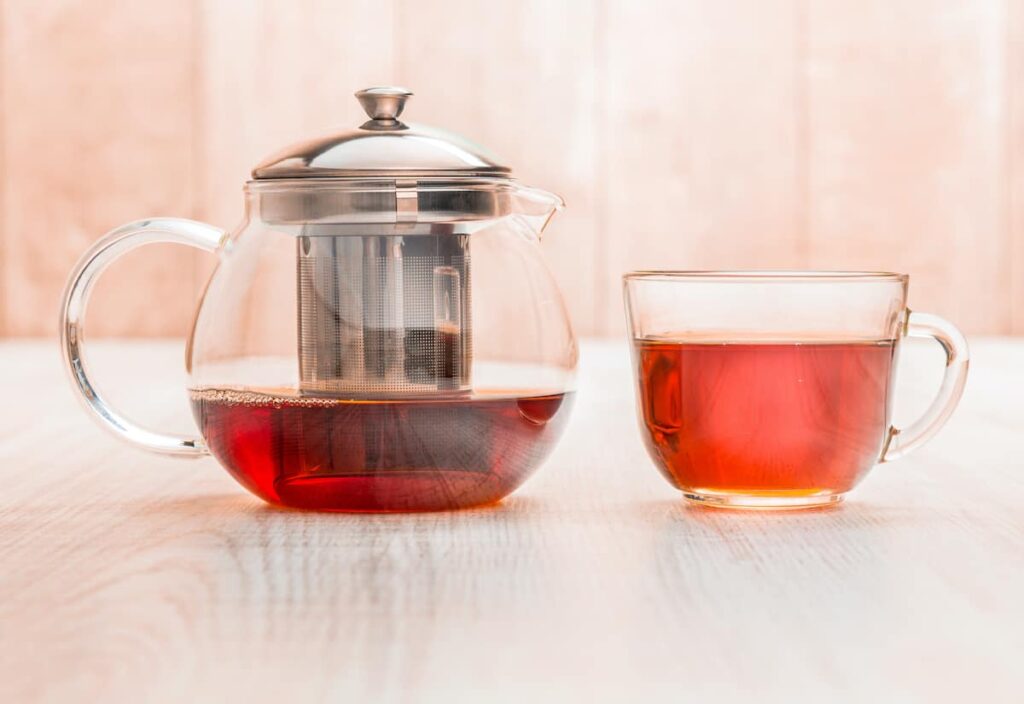
Tea is the most basic and foundational method of using herbs as medicine. It can be as simple as pouring hot water over dried herbs.
Some herbalists and tea experts will insist on precise water to herb ratios, water temperatures, and steeping times, which can alter the flavor strength, and chemistry that’s extracted. I encourage people to not get caught up in the numbers. Tea is a delicious cup of joy, not a math problem.
What You’ll Need
The Herb
The most important part of any herbal recipe is, of course, the herbs.
Many people think that tea, by definition, is made from dried herbs. This is probably because that is the only way tea is sold. Fresh herb tea is divine, and can have slightly different flavors and properties than one made from dried. One of my favorite parts about fresh herbal teas is that you don’t have to deal with the little bits of floating herb that are bound to escape your tea ball. A whole fresh leaf will stay intact in your cup or teapot and out of your throat.

Choosing an herb for a tea is largely about flavor. Not every herb makes a good cup of tea. Avoid herbs that are too bitter or acrid (caustic), as these can upset the stomach. Aromatic herbs are some of the best candidates for tea, since they tend to have good flavors and wonderful smells. These are also particularly good to consume hot if you are trying to bring out an herb’s diaphoretic (sweat inducing) qualities.
Some delicious teas to try are Holy Basil (mood uplifting), Ginger (digestion), Anise Hyssop (digestion), Lavender (Relaxation), or Fennel Seed (Digestion, Liver, Kidneys).
One of my favorite teas is Sage Leaf. It is a Circulatory and Digestion herb and was once used as a longevity tonic in Europe. Be careful, Sage can take on a strong bitter and soapy flavor if steeped too strong, so use less herb when making this tea.
Another fabulous tea to try is Roasted Dandelion Root. This is a great Liver tea with the bitter flavor many of us love in coffee. I like mine mixed with other roasted herbs like Carob, Cacao, Chicory, and Burdock. Together they have a smooth and rich, full bodied flavor that is to die for. You can buy a similar blend from Prairie Star Botanicals {prairiestarbotanicals.com}. Mix this blend with your coffee to counteract some of the ill effects of caffeine.
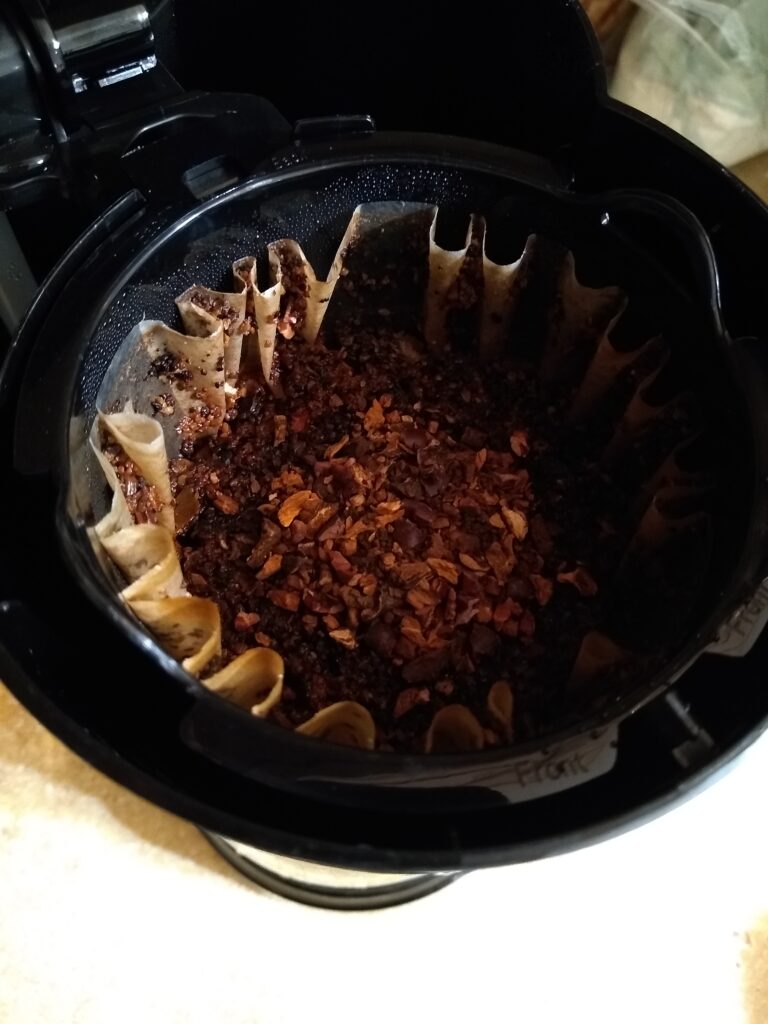
Bags, Strainers, or Tea Balls
Getting herbs caught in your throat can quickly ruin a pleasant cup of tea. There are many methods out there for keeping your herbs contained while they infuse.
You can steep your herbs freely, then strain out the solids. There are small straining funnels that fit on top of a cup for this purpose. Many Teapots will have some kind of strainer built in to minimize the amount of herb that gets poured out. When I brew large batched of tea, this is my preferred method. For small batches or single cups of tea, fussing with a strainer is not ideal.
Disposable paper tea bags are how most companies package tea for easy consumption. I find that most prepackaged tea has a very small range of flavor choices and the quality is often lacking. Check your ingredients, I have been surprised at some of the additives found in packaged tea. You can buy disposable bags to fill yourself, but they never seem to work well.
Fabric bags are versatile, since you can sew your own to be any shape or size you want. The drawstrings help it to close easily and seal well. Unlike disposable, they can be reused again and again. The only drawback to fabric bags is that you need to wash them.
Tea balls are common and now come in all kinds of designs, from large baskets for bulk brewing, to tea spoons with a built in compartment for your herbs to go. I am not a big fan of tea balls, because the latching mechanisms usually breaks, herb falls out, or the metal becomes rusted. I still use them from time to time, being conveniently sized and easy to clean, but I have discovered a much better way to make tea.
The French Press was originally designed for coffee, but there is no better way to make tea. The herbs can float freely in the water as they steep, then get pressed to the bottom before your tea is poured. The fine mesh of the press keeps all your herbs in their place and out of your cup. The clear glass allows you to watch your herbs dance and swirl as they float in the water. It’s beautiful, delicious, easy to clean, and simply my favorite way to make tea.
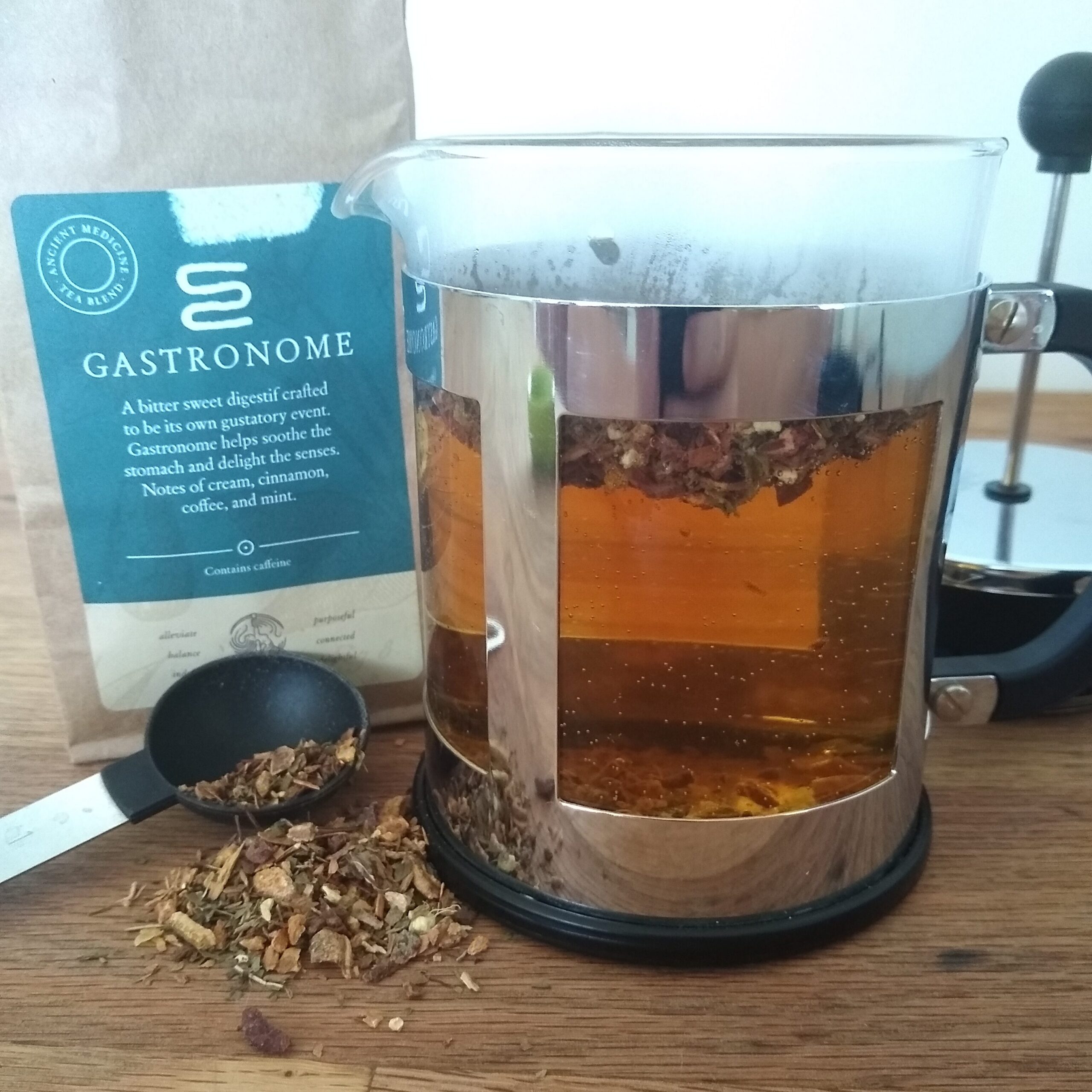
Teapots and Cups
I rarely use a teapot, unless I want to slow down and really savor my tea. I usually tend to use and average mug for my single cup brews and an insulated mug or tumbler for bigger batches that I need to keep warm longer. I like using the insulated mug to have tea all day at work and not feeling rushed to drink it before it gets cold.
Tea can leave a residue, called a patina, that will build up in your tea pot or cup over time. This can be a good thing, and is prized in Yixing tea pots and cups. These pots are used to brew a single type of tea, and as it gets used and the patina builds, the flavor of the tea brewed becomes more delicious. If you are brewing many types of tea this patina can transfer the flavors of a previous brewing to your current one. To avoid this, use pots and cups that can be easily cleaned or designate a particular cup and pot for a single type of tea.
The Basics
Ingredients:
8 oz Water
1 Tablespoon Herb (fresh or dried)
Method:
- Bring water to a boil.
- Place herbs in a cup and pour the hot water over.
- Steep for 2-5 minutes.
- enjoy 1-3 cups a day!
Variations
Less Herb
It may be beneficial to use less herb, when the flavor is unpalatable or the herb’s action is too strong. As described above, Sage Leaf is better as a weaker tea due to it’s bitter and soapy taste. As a weaker tea it is very pleasant and still effective at that concentration. If you feel that you aren’t getting the results you want out of weaker tea, you may want to drink an extra cup to compensate for the strength.
More Herb
Some herbs are weak or don’t infuse well in water. You may need to increase the amount of herb you are using to get the strength you need. You may also want a stronger tea for a quicker or stronger reaction. When using Elder Flower to break a fever, I prefer an extra strong tea to get things going. Whereas a building tonic like Nettle Leaf would be better as a normal strength tea taken over a long period of time.
Hotter Water
You can’t get your water hotter than a boil, but there are some reasons to have your water at this peak temperature rather than a cooler one. Hotter water will pull out more flavor and chemistry from the herb, which is needed for hard, dense herbs like Fennel Seed or Angelica Root. The Hot water can penetrate the tough exterior better to get out all the goodness. Most herbal teas are made with hotter water.
Cooler Water
Sometimes a less intense extraction can be preferred, especially when there is some offending flavor or chemistry in the herb. Green Tea is recommended to be steeped at a cooler temperature (steaming rather than boiling) otherwise the tea becomes too bitter. There is another type of infusion, the cold infusion, which uses room temperature water instead of hot water to modify extraction or preserve delicate chemistry.
Steep Shorter
You may want to cut the steep time short to avoid extracting too much of the plants chemistry. For me, the drying nature of tannins can be too much. I like to steep Green Tea for only a short time to keep the tannins from being overpowering.
Steep Longer
Steeping for a longer time can create a stronger tea. I find that herbs, rather than green or black teas, take well to longer steeping times and can allow them to draw out more flavor, which means more chemistry! I usually do not remove my herbs once they have started steeping, so that, when I’m done drinking, I can add more hot water for a second infusion.
Why Choose a Hot Infusion
The main advantage to the Hot Infusion over other preparation methods is that it also imparts heat to the body.
This is particularly beneficial when addressing conditions caused by Cold. For example, a Cold digestion is marked by undigested food, too fast or too slow of movement, and a lack of appetite. The digestion needs to be warmed up and stimulated in order for food to be properly broken down, absorbed, and moved. Warming herbs plus a the physical heat of the Hot Infusion are very effective at warming the digestion.
Hot teas also enhance an herb’s diaphoretic (sweat inducing) nature. Try a hot infusion of high quality Cinnamon. You’ll start sweating in no time. Diaphoresis is an important action in Herbal Medicine, for breaking fevers, clearing the pores, releasing heat, moving energy, and much more.
With a Hot Infusion, you are also getting water. The addition of water to an herbal remedy is helpful to hydrate the body. Without proper hydration, it is hard for your body to absorb nutrients (or herbs), get nutrients to the cells, and flush out waste products. Hydration also plays a major role in your Heat, Intestinal, Urinary, and Immune health.
When not to use a Hot Infusion
This type of infusion uses water as the solvent. When the herb contains chemistry that is not water soluble, a Hot Infusion is not going to be the most effective. Oils and resins are the two substances that resist water solubility the most. Oily herbs like Cacao are better extracted as an infused oil or ground and suspended in oil (like Chocolate). Other oily herbs like Sesame are better used as a pressed oil. Resinous herbs like Calendula, Yerba Santa, or Cottonwood Buds are best extracted in high alcohol and mildly soluble as an infused oil.
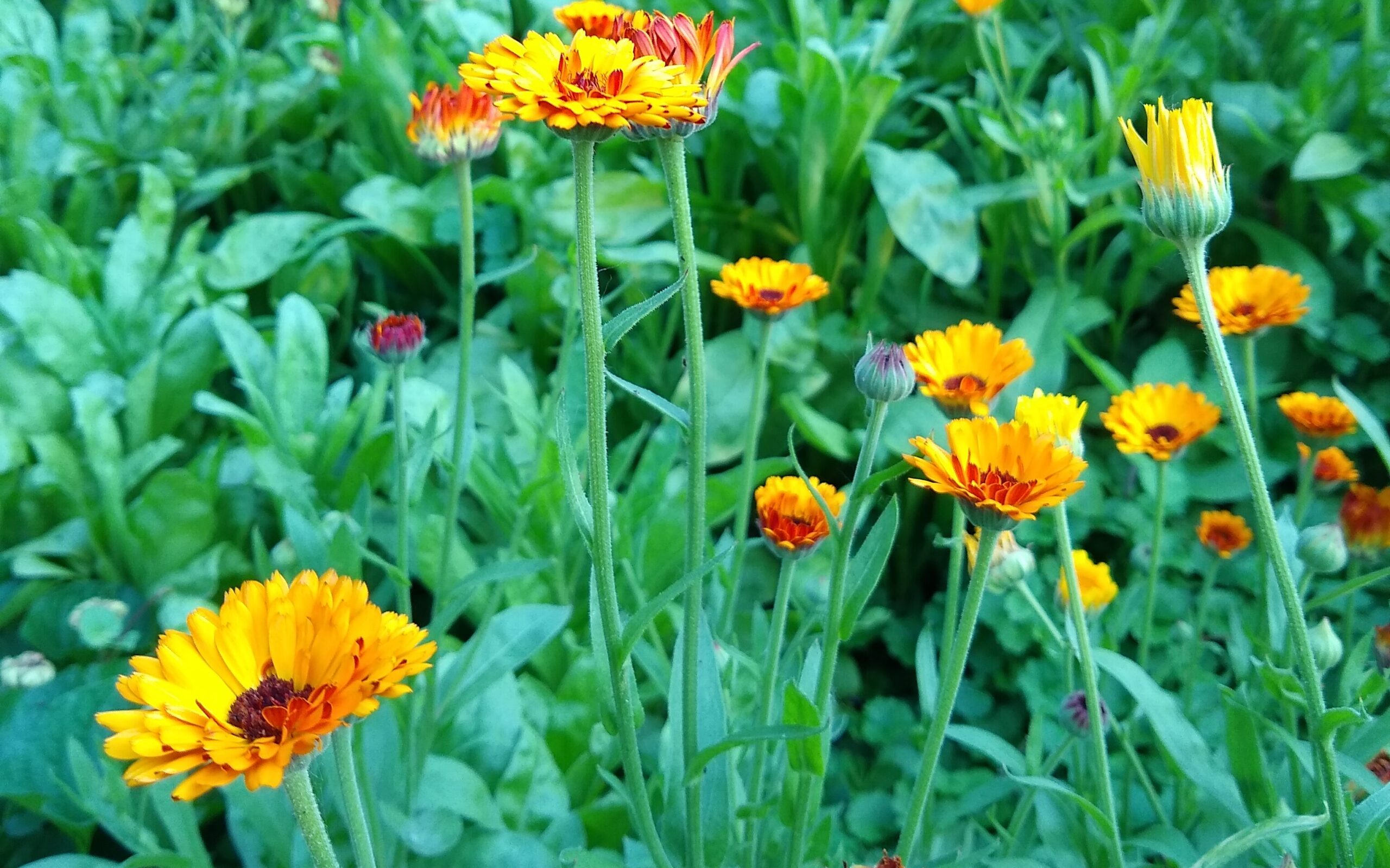
The heat of the Hot Infusion can be too intense for some chemistry, causing it to break down or evaporate off. The delicate essential oils that make aromatic herbs smell so good, will be released by the hot water. The oils vaporize and fill the air, not unlike the action of an essential oil diffuser. This can be good, giving you a bonus aromatherapy treatment along with your cup of tea. Though, if you want to preserve the volatile oils in solution, you need to avoid heat. Aromatic herbs are best infused in alcohol or with cool to cold water.
Heat will degrade many compounds over time, especially ones with more complex structures. Mucilage or soluble fiber is one of the most susceptible types of compounds to heat damage. It is found in ooey gooey herbs like Marshmallow, Slippery Elm, and Plantain. These kind of herbs are called Demulcents. When heated the thick mucilage becomes thin and runny, loosing it’s supreme moistening quality. Demulcent herbs are best extracted as a cold infusion, which does not involve any heat.
Herbs high in protein do not extract well as a Hot Infusion, due to protein’s tendency to congeal. Like cooking an egg, the free moving proteins bond to each other when heat is applied, creating a solid mass. During infusion the protein can solidify inside the herb, locking in the flavor and chemistry. Roots and seeds are typically where plants will store these high concentrations of proteins, and are better extracted by cold infusion, with alcohol, or as a decoction. The continued heat of a decoction eventually breaks down the solid protein wall to allow extraction to be completed.
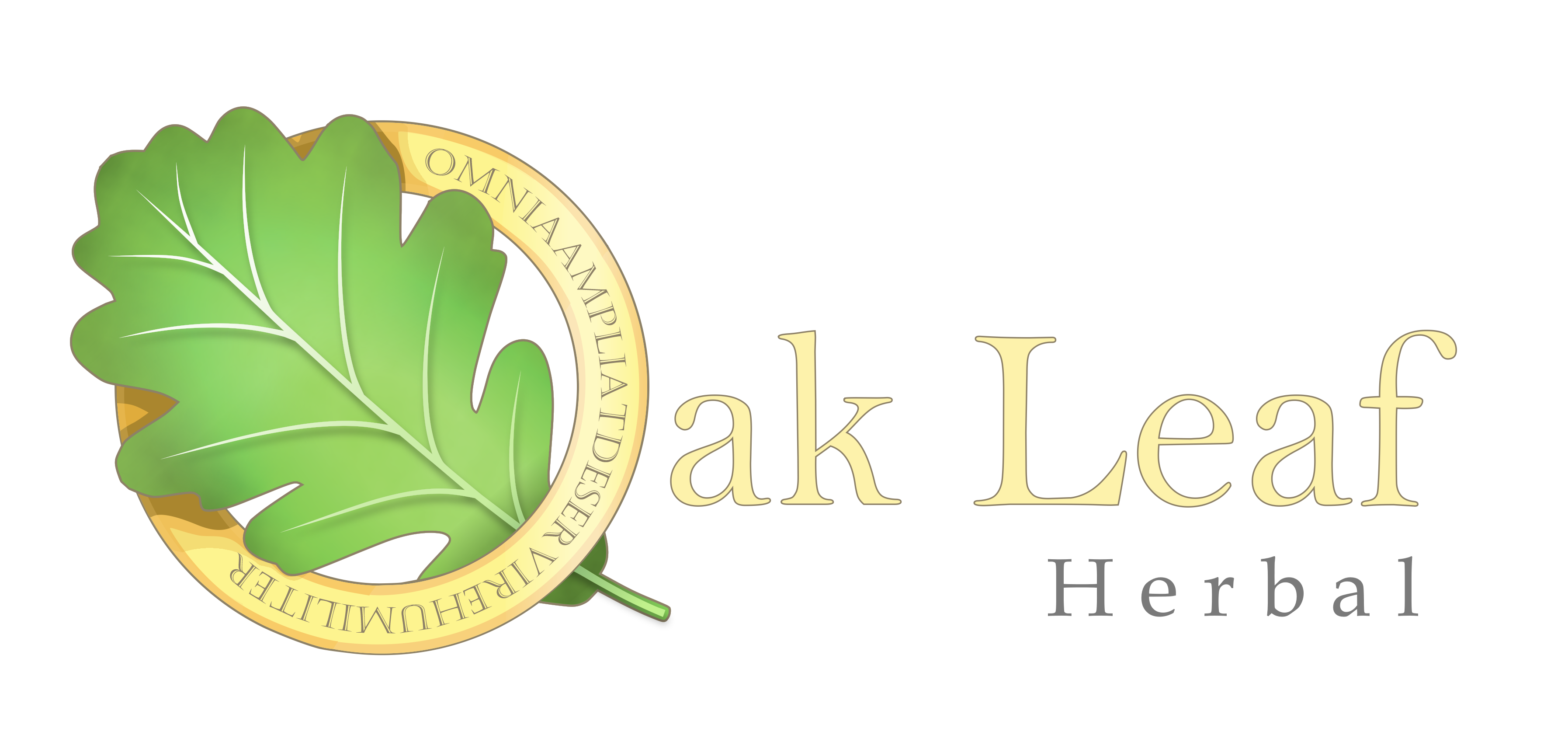
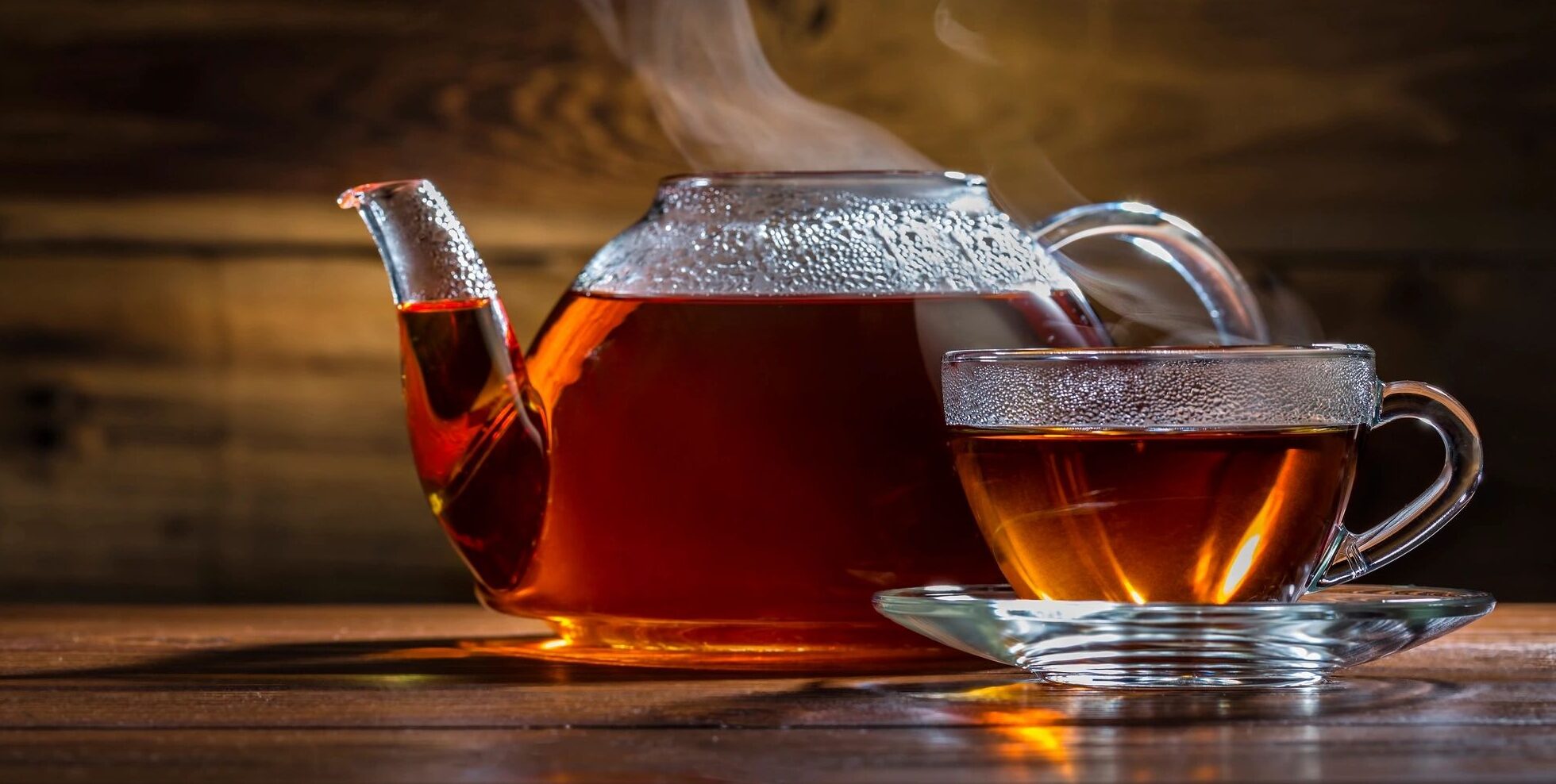
Thank you for this beneficial information. I found the heading “Variations” especially helpful; the results of hot vs cold water on certain herbs is something I hadn’t considered before. And I’ll definitely be trying Sage leaf soon!